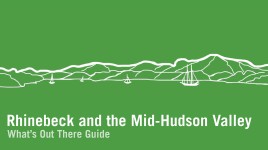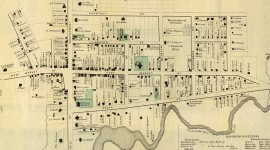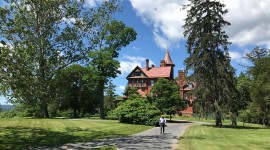Landscape Information
Located within Hudson Highlands State Park, approximately two miles east of the Hudson River, this mountain, blanketed by deciduous trees, is named for signal fires built near its two summits during the Revolutionary War. The summits afford visitors expansive views across the valley, extolled by Andrew Jackson Downing in an article published in 1835.
A derelict incline railway, designed by the Otis Elevator Company, ascends the mountain’s western face. The path of the former funicular is marked by a narrow, curving, treeless gap, visible from afar. Completed in 1902, the railway was promoted as the steepest in the world and brought visitors to amenities west of the northern summit. A casino, featuring a dancehall, was sited south of the funicular in a clearing perched along the mountain’s edge and was complemented by an adjacent hotel in 1907. Mount Beacon attracted D.W. Griffith, who filmed three short motion pictures on site. A series of fires in the twentieth century destroyed the casino, hotel, and railway, though the relatively level foundations of the casino and hotel remain amidst rocky outcrops and are utilized by hikers as viewing platforms. Footpaths climb from the south and northwest through rugged, forested terrain to summit overlooks.
The northern summit is topped by a stone obelisk (1900, reconstructed 1934) commemorating the site’s role in the Revolutionary War and the exposed, rocky southern summit features a 60-foot-tall fire lookout tower (1931, restored 2013). The lookout tower affords myriad views including a naturalistic reservoir established in the nineteenth century near the summits, or landmarks farther afield, such as the New York City skyline to the south and the Catskill Mountains to the north.
From 1995 to 1999 the non-profit, Scenic Hudson, acquired 258 of the mountain and transferred nine acres to the city of Beacon in 2014, and 234 acres to the state in 2015. The incline railway and powerhouse were listed in the National Register of Historic Places in 1982.






